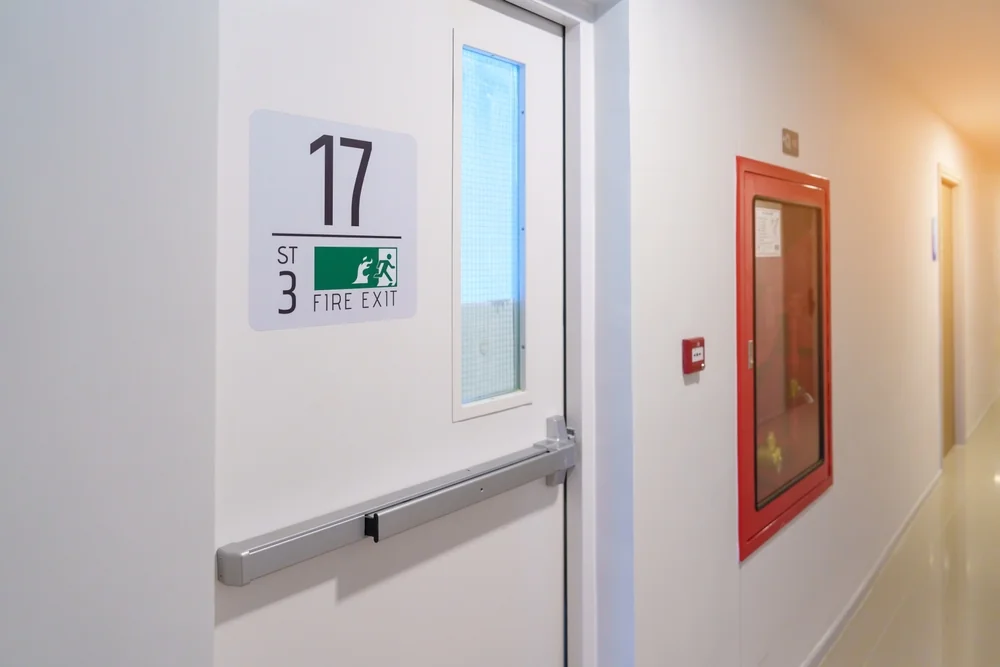Fire safety has always been a cornerstone of building management, but the way buildings defend against fire risks has changed dramatically in recent years. Traditional measures focused on static, immovable structures designed to contain or slow down the spread of fire. While these remain vital, the arrival of connected devices and digital integration has opened the door to more dynamic solutions that improve safety, efficiency and compliance. IECC knows how merging proven methods with modern technology creates systems that are not only stronger but also smarter.
By connecting physical fire barriers with intelligent sensors, analytics and cloud-based monitoring, businesses and building managers can ensure greater resilience against risk. The combination of passive fire measures and smart technology builds a system that actively communicates, reports and even predicts issues before they become critical. The results go beyond fire safety, as they create streamlined maintenance, simplified compliance and confidence that buildings are future-ready. This transformation marks a pivotal shift from reactive approaches to proactive, integrated fire protection.

The earliest fire protection strategies were purely physical, relying on walls, doors and sealing systems to delay fire spread. These systems served their purpose but required manual inspections and often offered no visibility into their real-time performance. With the advancement of IoT, passive fire measures now work hand in hand with data-driven tools, transforming from silent barriers into active elements of a larger safety framework. This evolution ensures that buildings benefit from both physical defence and intelligent oversight, reducing the risks of unnoticed faults and delayed responses.
Integrating smart sensors into established fire-resistant structures has significantly increased their effectiveness. These sensors continuously monitor the integrity of doors, walls and sealing systems, ensuring that potential weaknesses are detected early. By linking physical defences with intelligent devices, buildings gain a deeper layer of awareness that wasn’t possible before.
Artificial intelligence has become a powerful ally in enhancing passive fire protection. By analysing patterns and data collected from connected devices, AI can identify unusual activity that may signal future risks. This predictive ability means that managers can intervene before a fire hazard escalates into an emergency.
Technology does not replace human expertise; it amplifies it. With smart integrations, fire safety professionals gain better tools to assess conditions and make informed decisions. This partnership between people and technology leads to safer, more responsive environments.
Remote monitoring has reshaped the way building managers handle fire protection. Instead of waiting for inspections or emergencies, they now have access to continuous oversight of fire systems. This approach ensures early detection of problems and enables predictive maintenance, which minimises risks and prevents costly disruptions. With smart connectivity, fire protection no longer stops at physical barriers but extends into an intelligent, always-on monitoring network.
Having systems that watch over themselves around the clock changes the game for safety management. Continuous monitoring ensures that no detail is missed, even outside regular inspection schedules. For businesses, this translates into improved reliability and confidence that fire barriers remain uncompromised.
Predictive maintenance uses collected data to anticipate when systems may require servicing. Instead of reacting to breakdowns, teams can prepare in advance, ensuring safety remains intact without interruption. This proactive strategy reduces both costs and risks while keeping compliance in check.
Cloud technology is at the heart of modern fire system monitoring. By storing and processing data remotely, it ensures information is accessible anytime, anywhere. This not only boosts responsiveness but also enables collaboration between stakeholders.
Data is one of the most powerful tools modern managers have for keeping buildings safe. Instead of relying solely on visual inspections or incident history, they can now base decisions on live, measurable insights. These insights improve efficiency, compliance and long-term planning by showing where attention is most needed. When harnessed correctly, data turns passive fire systems into dynamic tools for decision-making.
Real-time insights enable managers to focus their resources where they matter most. Instead of spreading attention evenly, they can prioritise high-risk areas identified by smart systems. This targeted approach ensures safety remains strong without unnecessary expense.
Smarter scheduling avoids wasted time and money by aligning inspections and servicing with actual system needs. Data-driven scheduling ensures that resources are not overused while also preventing costly failures. This efficiency benefits both safety and the bottom line.
Data is also valuable for shaping long-term safety strategies. By studying patterns over months or years, managers can make better decisions about upgrades and investments. These decisions are based not on guesswork but on proven performance records.
Compliance has always been a time-consuming part of fire safety, but digital tools have made it far more manageable. Instead of relying on paper-based records and manual filing, managers can now store, organise and update compliance documents digitally. This creates transparency, improves accuracy and ensures no requirement is overlooked. By using digital solutions, compliance becomes less of a burden and more of an integrated process.
Automation reduces human error and speeds up record keeping. Compliance documents are generated and updated automatically, giving managers more time to focus on safety. This makes meeting regulatory requirements much easier and more reliable.
Audits become less stressful when all records are stored in one secure place. Centralised records ensure that auditors have access to accurate, up-to-date documentation. This reduces delays and ensures compliance can be demonstrated quickly.
Transparency is key when multiple people are involved in fire safety management. Digital tools make it easy for everyone to access the same information, avoiding miscommunication. This collaborative approach strengthens compliance efforts and creates accountability.

Fire systems no longer operate in isolation. By integrating with broader building management platforms, they contribute to a unified system of safety, energy efficiency and operational control. This interconnectivity ensures that buildings not only stay compliant but also run more smoothly. It also improves communication between safety systems and other operational tools.
When fire protection systems integrate with security systems, building safety becomes more complete. Both systems can communicate and respond in ways that improve protection for occupants and assets. This creates a safer environment and better coordination during emergencies.
Energy efficiency and fire safety may seem unrelated, but integrating the two offers significant benefits. Shared platforms ensure that building operations are coordinated for both safety and sustainability. This reduces risks while also cutting energy waste.
Unified dashboards make it easier to manage all building systems in one place. Managers can view safety, security and efficiency data without switching between multiple tools. This integration improves decision-making and reduces the chance of oversight.
The integration of smart technology into fire protection is only at the beginning of its journey. As regulations evolve and new technologies emerge, buildings must adapt to remain compliant and safe. Future-proofing involves investing in tools that can evolve with these changes, ensuring long-term protection. By combining adaptability with compliance, managers can secure their buildings for years to come.
Regulations are always evolving, especially as technology opens new possibilities. Staying ahead of these changes ensures compliance is maintained without disruption. Forward-thinking managers prepare for these shifts in advance.
Technology is progressing rapidly and embracing these changes is key to staying ahead. IoT and AI will only become more advanced, offering even greater safety and efficiency. Buildings that adopt these technologies early position themselves for long-term success.
Resilience means being prepared for both known and unknown risks. By adopting adaptable systems, businesses can face challenges with confidence. This ensures both safety and operational continuity for years to come.
Integrating IoT and smart technology into passive fire protection has transformed the way buildings manage risk, compliance and safety. By combining proven physical measures with intelligent monitoring and predictive insights, managers gain not only stronger protection but also clearer visibility and more efficient operations. These advancements show how traditional fire safety has evolved into a more dynamic, proactive field that safeguards both people and property.
IECC believes the future of fire safety lies in adaptability, interconnectivity and smart integration. By embracing these changes today, businesses ensure they remain compliant, efficient and secure in the years ahead. With technology continuing to advance, the opportunities for creating safer and more resilient buildings will only continue to grow.